Published Dec 11, 2017
Creating The Book of Lists
Creating The Book of Lists
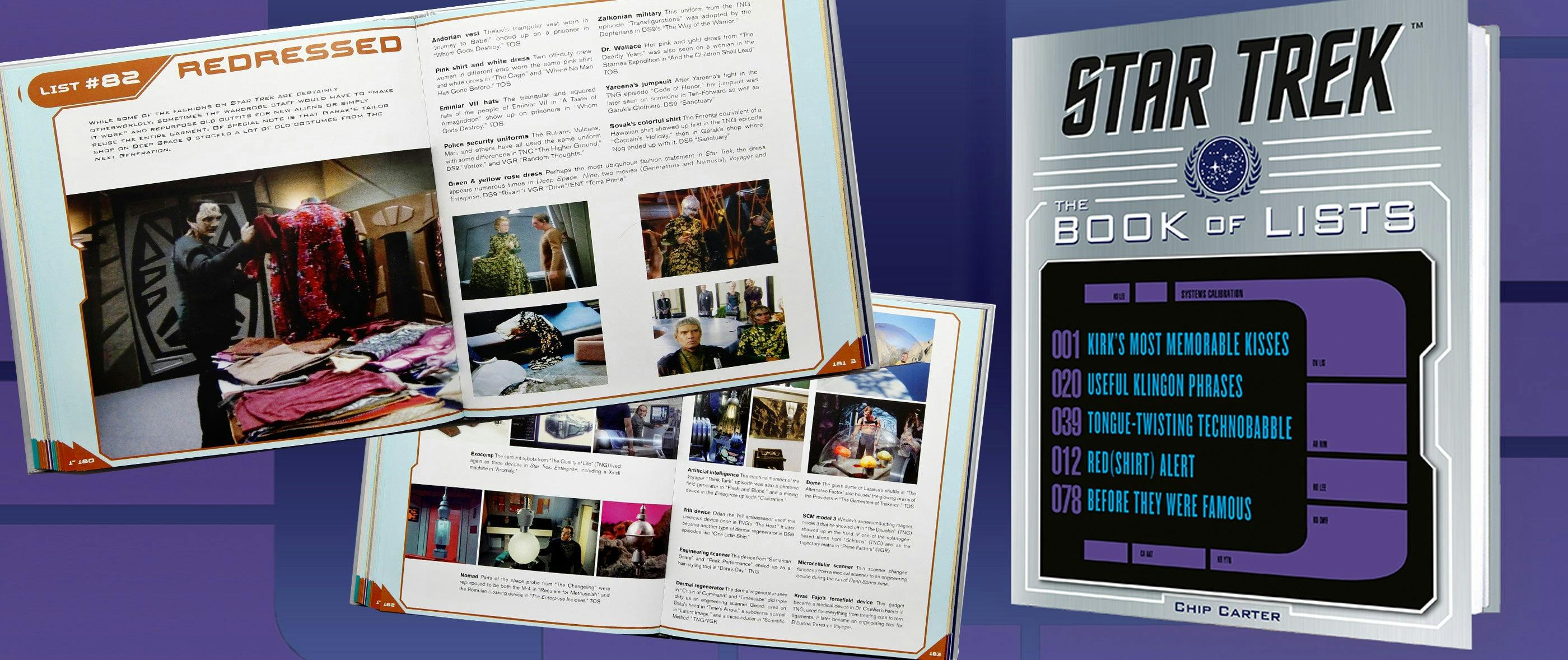
When my editor sent me an email out of the blue asking if I’d be interested in writing Star Trek: The Book of Lists, I wasn’t sure why he chose me. Sure, I’d written Obsessed With Star Trek, a book of 2,500 trivia questions on all things Trek… followed by 1,200 Star Trek Trivial Pursuit game questions. Sure, I knew my way around trivia… but I didn’t think of myself as a “list” person.
Then I thought harder… my Star Trek career actually started with lists. For over a year, I worked for a design agency that produced the Star Trek trading cards for Fleer Skybox in the mid-90s. The show was coming up on the 30th anniversary and task one was to assemble what cards would go in an anniversary set. With trading cards, checklists always came first, to see if we had enough images, facts, etc. For the anniversary set’s main checklist and chase card checklists, I started compiling lists of technology, doppelgangers, weapons, aliens and ship plaques.

Chase cards were special cards – in the mid-90s, as with comics, trading cards relied heavily on foil, die cuts, hologram cards and anything else we could think of. Star Trek was especially easy to create those types of sets for, since Trek’s futuristic technology lent itself to that. My first Voyager set was all about the show’s first season. How I convinced everyone we needed scratch n sniff recipe cards from Neelix’s kitchen is beyond me, but they exist and I’m still proud we made that happen!
My trading card work landed me my dream job – approving licensed Star Trek comics for Paramount Pictures. I teamed with great people at Marvel Comics on a line of books based on everything from the Early Voyages to Starfleet Academy. We also invited some X-tremely popular mutants for a crossover or two.
I had a lot of lists in the comics days as well. When I wasn’t walking over to the sets and waving at the Klingon extras smoking outside Stage 15, I was keeping track of the number of pips on uniforms, the number of appearances Q made and even how many times some actors appeared in comic book panels.
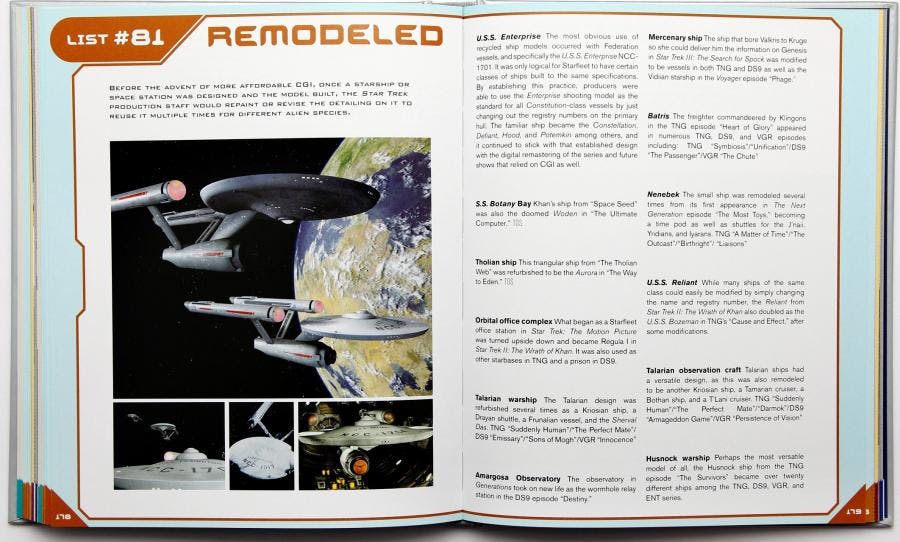
When the Book of Lists started, my editor already had a bunch of lists to get me going, but I had free rein to pull as much from the universe as I could. We needed lists that’d present as wide a spectrum of the different aspects of the Trek universe on and off screen that we could get. With the Kelvin Timeline now available (Discovery was still in production as I finished the book), it was sometimes easier and sometimes harder to sample everything in only 100 lists.
Most every list I came up with we used, but some we cut as even more interesting or fun ones presented themselves.
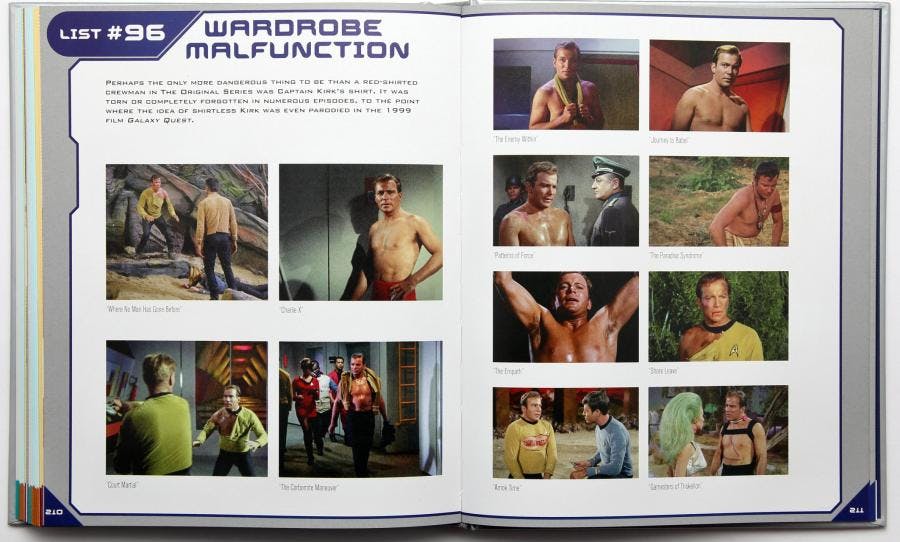
A few lists needed no explanation – the weekend box office numbers for each Trek film required only actual figures.
Other lists required context. Sure, we all knew Kirk kissed lots of alien women, but what were his reasons each time? Some he needed information from, some he loved and some, well, it was just another Saturday night. So, if a list needed context — either for old-time fans like me or newer fans getting acquainted with the universe — the lists could be a compass to highlights in the shows.
One list I did wish made it into the book was Up the Federation Ladder. I thought a list of characters who’d been promoted or moved up in rank over the course of the timeline would be good. The first step was to see how many characters fit the bill. I wasn’t constrained to make lists of 10 or any particular number, but a list of only four or five didn’t seem strong enough.
The list was easy enough:






My next step was to see how much info there was in each case and what could be said about the character pre- and post-promotion.
Ultimately, the list’s real standouts (Nog, Troi and Empress Sato) didn’t make up for the fact that many promotions (Sulu, Admiral Janeway, and even Spock) happened off-screen. I didn’t think we saw enough of Admiral Janeway and Captain Sulu to say much about their promotions. And in all honesty, it’s not like Hoshi was promoted to Empress. She sort of… killed her way to the top. Still, I defy anyone to tell her she didn’t earn it!
We dropped that list, but had we kept it, I’d have started fleshing things out, beginning with a paragraph overview. I always liked quotes that made sense. The speech Kirk gave Picard in Generations would be a good quote to launch this particular list. While I remembered the scene, even my positronic memory relays can’t remember actual lines. I’m lucky enough to have scripts from my studio days, but sometimes it was quicker to cue my films up on iTunes and see that he said that at 1:38:43. My memory isn’t too bad… I scrubbed the video to 1:40:21 on my first try, so I was close.
Up the Federation Ladder
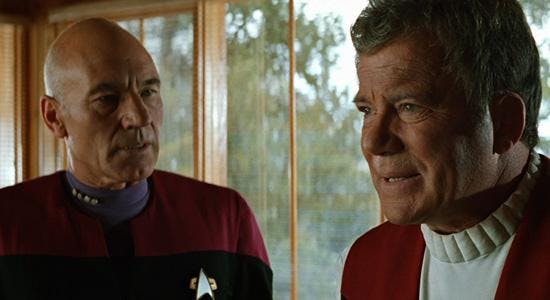
“Don’t let them promote you. Don’t let them transfer you. Don’t let them do anything that takes you off the bridge of that ship, because while you’re there, you can make a difference” – Captain James T. Kirk to Captain Jean-Luc Picard
Despite Kirk’s advice to his successor, Starfleet recognized the value of promoting capable personnel up in rank. While Kirk’s first, best destiny was a starship captain, he did in fact get promoted to admiral. Many others during the history of Starfleet also rose through ranks and some of them found their destiny that way.
Now that I had an overview, I’d review the compiled list and begin writing. Much of it I could rattle off, but I still needed to do a fair amount of research. Luckily, I still know people who worked on the shows and films that I could call for info, as well as a number of licensed works. From the Okudas’ updated Star Trek Encyclopedia — which was also produced by my publisher — to the TNG Technical Manual and individual show companion books, a wealth of information existed to help in researching lists. And, of course, my editor, who started out as a Paramount Studios tour guide and also wrote several Trek reference books, was a useful resource as well.
My lifelines were either re-watching a part of an episode, checking a licensed publication or phoning a friend. No matter how much anyone claims to be an expert on anything, memory plays tricks on you. While I remembered seeing Hoshi use a knife on Archer, I had to go back and re-watch the final scenes of “In A Mirror, Darkly, Part 2,” to remind me that she actually poisoned Archer. The knife scene came earlier.
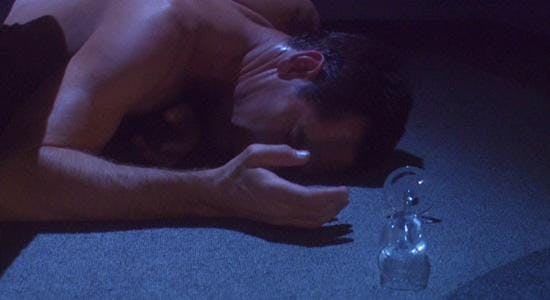
Once my facts were straight, the entry for a list usually came pretty easy. Each entry usually had at least one episode citation – some spanned multiple episodes and the primary one would be used. These two show examples of the different types of entries and citations:
Captain William Riker
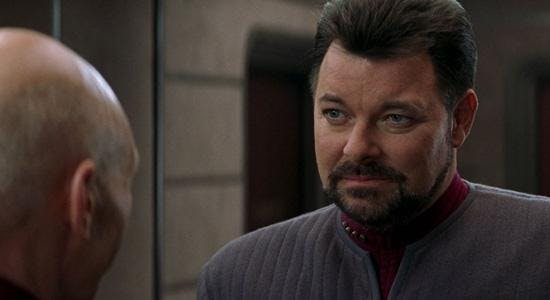
Will began his career as an ensign aboard the U.S.S. Pegasus under Captain Erik Pressman. He joined the crew of the U.S.S. Potemkin as a lieutenant and later became first officer aboard the U.S.S. Hood. He was promoted to commander and first officer aboard the U.S.S. Enterprise-D in 2364. Riker stayed on the Enterprise for 15 years, and turned down offers to command his own ship three times. It seemed he felt being aboard Starfleet’s flagship under Captain Picard offered him more than his own command. He finally accepted a promotion to captain of the U.S.S. Titan in 2379. TNG “Encounter at Farpoint,” “The Pegasus,” ST: Nemesis
Empress Sato
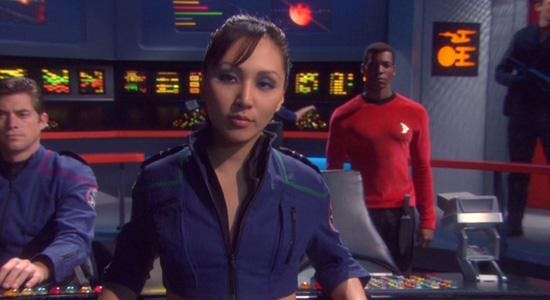
Lieutenant Hoshi Sato in the Mirror Universe was as power-hungry as her former lover, First Officer Jonathan Archer. When Maximillian Forrest took command of the Enterprise, she left Archer for Forrest to be the “captain’s woman.” When Archer discovered a futuristic ship from another dimension, Sato returned to him long enough to seduce Archer, poison him and claim the advanced ship for her own. Sato declared she was now “Empress Sato,” and demanded Earth’s surrender. ENT “In A Mirror, Darkly, Part 2”

A hundred lists like that later, I was done! Well, not quite. I then helped select lots of photos. Again, I have a good memory of what archive photos are available. One of my first jobs on the trading cards was to visit the studio for a weekend, go in the vault and actually select film clips from duplicated masters of The Original Series to fill out the library. It was an insanely cool task. Knowing that many of the TOS images used on trading cards, in books, and on all sorts of licensed products since the mid-90s, came from that weekend of pulling film clips is a cherished memory. And to have one or two in my book is an amazing way to bring my work full circle.
Of course, now we can pull screen grabs from the digitally remastered episodes. My last bit of effort on these lists was directing my editor to episodes he could find screen grabs for the more obscure references that didn’t have the benefit of an on-set photographer, or a film clip that went through my hands decades ago.
I might not have considered myself much of a list person, but I guess I’ve been working on these lists for most of my life. Still, I haven’t made one list yet… the bestseller list. Please feel free to help with that!
Star Trek: The Book of Lists spans the science-fiction franchise’s 51-year history, gathering together tons of Star Trek facts and trivia, including events from both on and off-screen, into 100 concise lists. It’s on sale now at www.harpercollins.com, priced at $19.99.

